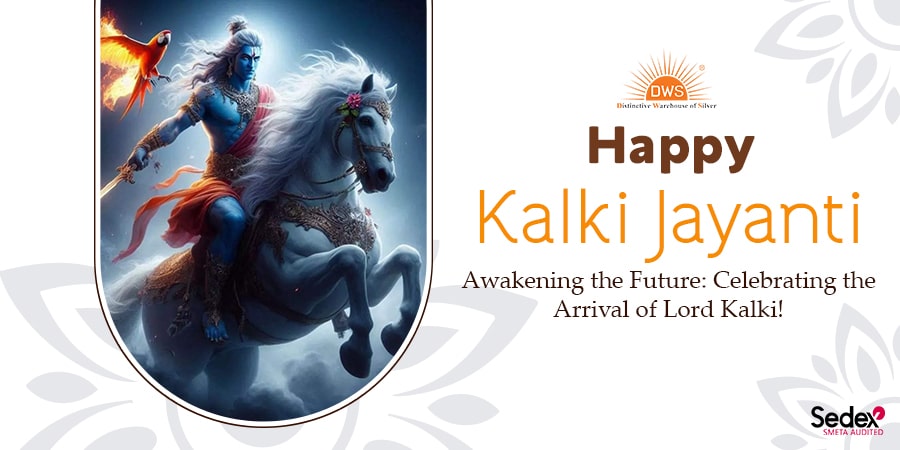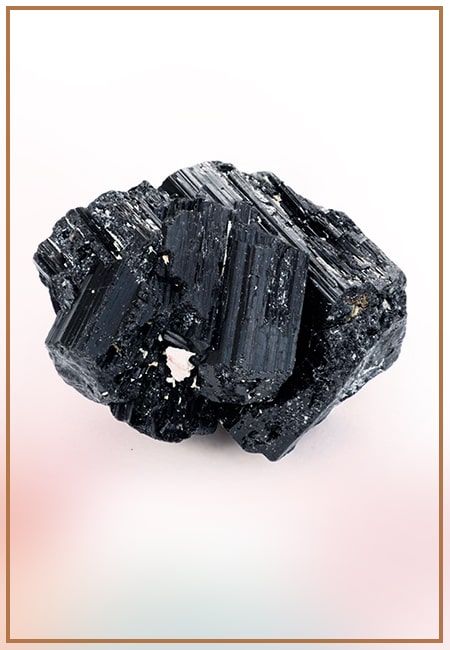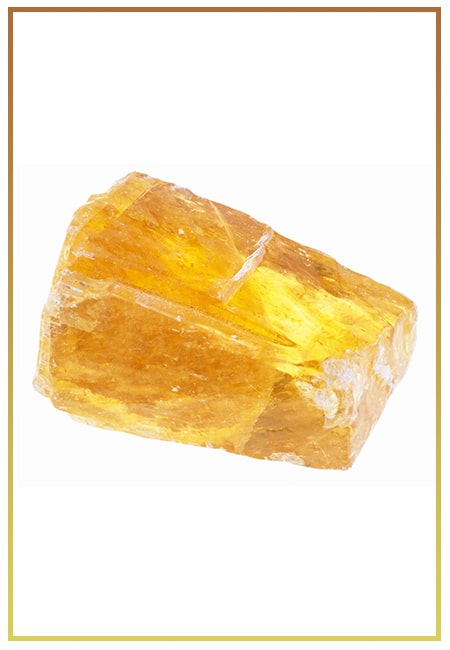- Written By Team DWS
- Festivals
- August 02, 2024
The Significance of Kalki Jayanti in Hindu Philosophy
Kalki Jayanti is an essential celebration within Hinduism, marking the anticipated appearance of Kalki, the tenth and final avatar of Lord Vishnu. According to Hindu beliefs, Lord Vishnu incarnates in various forms to restore cosmic order (Dharma) whenever it is disrupted by evil (Adharma). With the belief that we are living in the age of Kali Yuga, a phase characterized by strife, corruption, and moral decline, the significance of Kalki Jayanti becomes evident as devotees await the arrival of the savior who will vanquish evil and re-establish righteousness. In this article, we delve into the significance of Kalki Jayanti within Hindu philosophy, exploring its historical context, mythological narratives, cultural practices, and philosophical implications.
Historical Context of Kalki
The concept of Kalki as an avatar of Vishnu has its roots in ancient texts including the Puranas, notably the *Bhagavata Purana*, *Vishnu Purana*, and *Padma Purana*. These texts chronicle the cycles of time (Yugas) and describe the characteristics of each Yuga. According to Hindu cosmology, time is divided into four Yugas: Satya Yuga (the age of truth), Treta Yuga (the age of three Vedas), Dvapara Yuga (the age of duality), and Kali Yuga (the age of darkness). It is during Kali Yuga that the moral and ethical fabric of the universe is said to become fragile, prompting the necessity for divine intervention.
The significance of Kalki Jayanti can be drawn from the prophetic elements in these texts, promising that Kalki will arrive on a white horse, wielding a sword, to remove oppression and restore Dharma. This cyclical understanding of time and divine intervention encapsulates a critical aspect of Hindu philosophy—one that plays a role in how adherents view the struggle between good and evil, chaos and order, and the eternal quest for righteousness.

Kalki in Hindu Mythology
According to the legends, Kalki is prophesied to emerge at a time when virtue has been completely overthrown and vice reigns supreme. The narratives describe several key attributes of Kalki:
- Divine Wrath: Kalki is often seen as a warrior who will not only combat evil but also displace those who oppose Dharma with determination and resoluteness.
- Compassion and Justice: Despite the fierce nature of Kalki's impending arrival, the avatar is viewed as a benevolent force committed to justice. The destruction of evil is not an end in itself but the means to restore balance and ensure the flourishing of Dharma.
- Symbol of Hope: The arrival of Kalki symbolizes hope for the faithful. Even in turbulent times, the assurance of a forthcoming savior inspires resilience and faith within the community.
These elements collectively serve to reinforce the overarching themes of cosmic balance inherent within Hindu philosophy. The confrontation between light and darkness, good and evil, and the ultimate restoration of Dharma speak not only to the collective psyche of society but also connect deeply with personal journeys.
The Celebration of Kalki Jayanti
Kalki Jayanti is celebrated mainly by certain sects of Hinduism, especially within Vaishnavism. Observances may include rituals, prayers, and communal gatherings, where devotees come together to recite scriptures that espouse the virtues of Kalki. Although the specific customs can vary by region, some common elements include:
- Prayer and Rituals: Many devotees perform special poojas (rituals), reciting mantras associated with Kalki. This is often seen as an opportunity to invoke blessings for the removal of obstacles and the acquisition of strength in facing life's challenges.
- Storytelling: The sharing of stories and teachings related to Kalki provides an educational aspect to the festivities. Devotees may recount the tales of past avatars while highlighting the significance of the coming Kalki as an embodiment of justice and hope.
- Community Feast: In some communities, celebratory feasts bring people together to promote harmony and love. Food serves as a medium of goodwill and is often shared with neighbors, signifying unity against evil.
- Service to Others: The principles that Kalki embodies—compassion, justice, and righteousness—are reflected in acts of charity and service to the less fortunate. Engaging in social causes during this time serves to further emphasize the importance of preserving Dharma in contemporary society.
Philosophical Implications of Kalki Jayanti
Beyond its ritualistic and celebratory aspects, Kalki Jayanti prompts a deeper philosophical inquiry that resonates with various dimensions of life, ethics, and spirituality.
The Cyclic Nature of Time
The concept of Kalki Jayanti, the anticipated arrival of the Kalki Avatar in Hindu beliefs, embodies profound philosophical implications, particularly regarding the cyclic nature of time. In Hindu philosophy, time is not linear but cyclic, characterized by cycles of creation, preservation, and dissolution known as yugas. Kalki, as the prophesied tenth avatar of Vishnu, heralds the onset of Satya Yuga, a golden age of truth and righteousness, suggesting a return to an ideal state after a period marked by chaos and moral decline.
This cyclical perception invites reflection on the nature of existence, emphasizing that destruction can lead to renewal. It prompts one to consider the necessity of darkness for the emergence of light, establishing a dynamic interplay between good and evil. The anticipation of Kalki reiterates the belief in hope and redemption, as even the darkest times can yield transformative change.
Philosophically, Kalki Jayanti challenges individuals to confront the temporality of their experiences and the moral imperatives of their actions in the present moment. It suggests that engagement in righteous deeds can contribute to the forthcoming era of harmony, promoting a sense of agency within the larger cosmic order. Ultimately, the narrative of Kalki Avatar serves as a reminder that history is not merely a series of events, but a cyclic journey of growth, where each ending births a new beginning, encouraging a deeper understanding of the universe and humanity's role within it.
-dws638581612392007846.jpg)
Here’s a list of frequently asked questions (FAQs) about Kalki Jayanti:
1. What is Kalki Jayanti?
Kalki Jayanti is a Hindu festival that celebrates the anticipated arrival of Lord Kalki, the prophesied tenth and final avatar of Lord Vishnu. According to Hindu scriptures, Kalki is expected to appear at the end of the current age, known as Kali Yuga, to restore dharma (righteousness) and destroy evil.
2. When is Kalki Jayanti celebrated?
Kalki Jayanti is generally observed on the full moon day (Purnima) in the month of Kartika (October-November) according to the Hindu lunar calendar. The date may vary each year based on the lunar calendar.
3. Why is Kalki Jayanti significant?
Kalki Jayanti holds significant importance as it symbolizes hope and faith in the divine intervention for restoring justice and dharma in the world. It emphasizes the belief in the cyclical nature of time and the promise of a savior coming to eradicate evil.
4. How do people celebrate Kalki Jayanti?
Celebrations may include:
- Puja (worship): Devotees perform special rituals and prayers dedicated to Lord Kalki.
- Recitation of scriptures: Reading texts related to Kalki avatar, such as the Vishnu Purana and Bhagavata Purana.
- Community gatherings: Some communities organize events and discussions about Kalki's teachings and the significance of righteousness.
- Feasting and charity: Sharing food and making charitable donations are common practices.
5. What are the beliefs associated with Kalki?
Hindus believe that Kalki will appear on a white horse, wielding a sword, to vanquish evil and restore virtue, thereby paving the way for the next cycle of creation, Satya Yuga, a period characterized by truth and righteousness.
6. Are there specific rituals associated with Kalki Jayanti?
While specific rituals can vary among different communities, general practices include chanting mantras, performing homa (fire rituals), and making offerings to Lord Vishnu. Families might also light lamps and decorate their homes to mark the occasion.
7. Is Kalki Jayanti observed in all regions of India?
Kalki Jayanti is primarily celebrated in certain regions of India, particularly among those who follow Vaishnavism. However, awareness and observance may vary, with some communities celebrating it more prominently than others.
8. Can anyone participate in the Kalki Jayanti celebrations?
Yes, anyone can participate in Kalki Jayanti celebrations, regardless of their religious background. The festival is open to all who wish to join in prayers and festivities aimed at promoting peace and righteousness.
9. What lessons can we learn from the concept of Kalki?
The concept of Kalki teaches believers about the importance of righteousness, the fight against evil, and the hope for divine intervention. It serves as a reminder to uphold moral values and work towards justice in everyday life.
10. Where can I learn more about Lord Kalki and Kalki Jayanti?
You can read various Hindu scriptures such as the Vishnu Purana and Bhagavata Purana for detailed accounts of Lord Kalki. Additionally, reputable websites, spiritual organizations, and local temples often provide resources and insights into the teachings and significance of Kalki.
Feel free to reach out if you need further information or clarification on any specific aspect!
Popular on Blogs

Black Tourmaline: Meaning, Healing Properties, Fascinating Facts, Powerful Attributes, Versatile Uses, and Beyond
September 05, 2023 / BY Team DWS
Black Tourmaline, also known as Schorl, is a highly revered crystal with incredible metaphysical properties. It derives its name from the Dutch word "turamali," meaning "stone with ..

Carnelian Stone: Meaning, Healing Properties, Power, Facts, Color, Uses and More
December 26, 2023 / BY Team DWS
Carnelian is a vibrant and captivating gemstone that holds a plethora of meanings, healing properties, and powers. Its warm and fiery energy makes it a popular choice among crystal ..

Citrine: Exploring its Meaning, Healing Properties, Fascinating Facts, Powers, Versatile Uses, and Much More
November 18, 2023 / BY Team DWS
Citrine, with its warm golden hues, has captured the attention and imagination of people for centuries. This beautiful gemstone, commonly associated with wealth and prosperity, hol ..

Black Onyx: Unveiling the Meaning, Healing Properties, Fascinating Facts, Powerful Attributes, Versatile Uses, and Beyond
July 25, 2023 / BY Team DWS
Black Onyx, a striking gemstone admired for its deep black hue and elegant appearance, has captivated people for centuries. In this comprehensive guide, we will delve into the mean ..

Unveiling the Mysteries of Turquoise Stone: Exploring its Meaning, Healing Properties, Power, Facts, Color, Uses, and More
December 05, 2023 / BY Team DWS
Turquoise, with its captivating blue-green hue, has been adorning jewelry and artifacts for centuries. This striking stone has a rich history, rich symbolism, and a plethora of int ..

The History Behind The Popularity of Red Agate
December 23, 2022 / BY Team DWS
An Agate is a type of magma rock that takes many years till it is washed out naturally into the water. And that is the reason this stone has elements of water. This beautiful stone ..

Plan a Perfect Valentine's Week with Our Valentine Week List 2025
January 22, 2024 / BY Team DWS
Valentine's Day is undoubtedly the most romantic day of the year, but we believe that one day is just not enough to express your love and make your partner feel special. That's why ..

Bloodstone: Unveiling the Meaning, Healing Properties, Facts, Powers, Uses, and More
August 21, 2023 / BY Team DWS
Bloodstone, with its captivating deep green color with specks of red, is a mesmerizing gemstone that has fascinated civilizations for centuries. It possesses unique healing propert ..


